11 Best Herbal Creams For Joint Pain
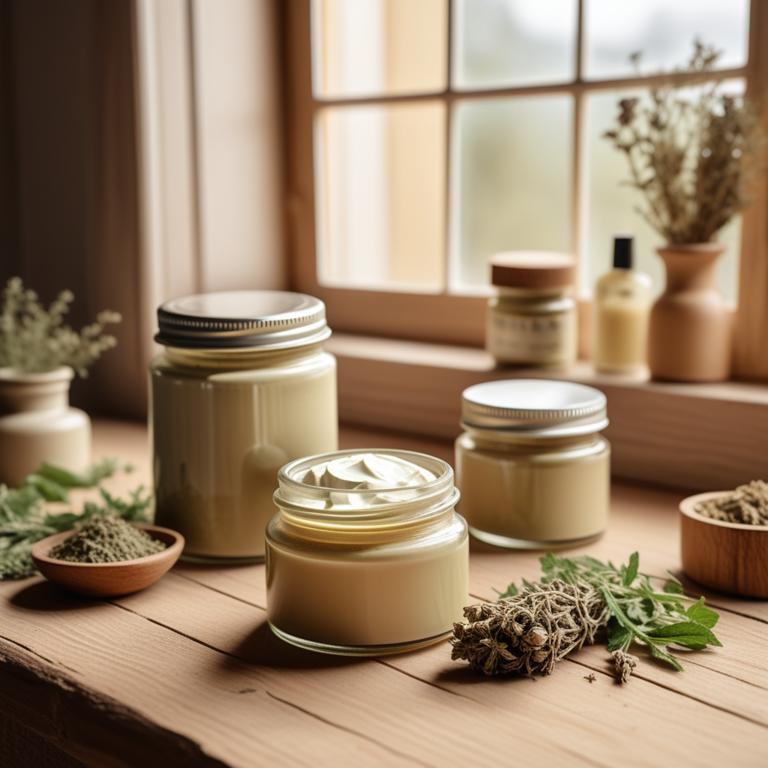
Herbal creams for joint pain are topical creams or ointments made from plant extracts that are used to relieve pain and inflammation in the joints.
These creams work by reducing inflammation, relieving pain, and improving joint mobility, providing natural and effective relief from conditions such as arthritis, fibromyalgia, and gout.
Examples of herbal creams that can be used to treat joint pain include arnica cream, which reduces inflammation and relieves pain, capsaicin cream, which blocks the production of a chemical that transmits pain signals, and willow bark cream, which contains salicin, a compound similar to aspirin.
Other herbal creams that can be used to treat joint pain include ginger cream, which reduces inflammation and relieves pain, turmeric cream, which contains curcumin, a compound with potent anti-inflammatory properties, and rosemary cream, which improves circulation and reduces pain.
According to "Postgraduate medicine", creams for joint pain such as those containing diclofenac or ketoprofen can alleviate pain, although some controversy exists on their efficacy, with current management guidelines advising them as an option for knee OA treatment, particularly among elderly patients.
Below there's a list of the 11 best herbal creams for joint pain.
- 1. Arnica montana creams
- 2. Calendula officinalis creams
- 3. Curcuma longa creams
- 4. Cinchona officinalis creams
- 5. Commiphora mukul creams
- 6. Boswellia serrata creams
- 7. Hamamelis virginiana creams
- 8. Capsicum annuum creams
- 9. Zingiber officinale creams
- 10. Aloe barbadensis creams
- 11. Glycyrrhiza glabra creams
Also you may be interested in...
TODAY'S FREE BOUNDLE
Herb Drying Checklist + Herbal Tea Shopping List + Medicinal Herbs Flashcards
Enter you best email address below to receive this bundle (3 product valued $19.95) for FREE + exclusive access to The Aphotecary Letter.
$19.95 -> $0.00
1. Arnica montana creams

Arnica montana creams have been widely used to treat joint pain, a common ailment associated with inflammation and discomfort.
The properties of this herbal preparation, including its anti-inflammatory and analgesic properties, help to alleviate pain and reduce inflammation in the affected joints.
The bioactive constituents of Arnica montana creams, such as flavonoids, sesquiterpenes, and triterpenes, work synergistically to reduce inflammation, ease pain, and promote healing in the affected areas.
The benefits of using Arnica montana creams to treat joint pain include reduced inflammation, improved mobility, and enhanced overall well-being, making it a popular natural remedy for those seeking a more holistic approach to pain management.
2. Calendula officinalis creams

Calendula officinalis creams have been traditionally used to treat joint pain ailments due to their anti-inflammatory, antiseptic, and analgesic properties.
These properties help to reduce swelling, prevent infection, and alleviate pain associated with joint pain, making it an effective natural remedy for this condition.
The bioactive constituents of Calendula officinalis, including triterpenoids, flavonoids, and carotenoids, contribute to its therapeutic effects by reducing pro-inflammatory cytokines and promoting tissue repair.
Regular use of Calendula officinalis creams can provide relief from joint pain and inflammation, promoting a faster recovery and improved overall well-being.
3. Curcuma longa creams

Curcuma longa creams have been widely used to treat joint pain ailments due to their anti-inflammatory and antioxidant properties, which help to reduce inflammation and oxidative stress in the affected joints.
The bioactive constituents of Curcuma longa, such as curcuminoids, flavonoids, and phenolic acids, are responsible for its therapeutic effects, including the inhibition of pro-inflammatory enzymes and the scavenging of free radicals.
The use of Curcuma longa creams has been found to help alleviate joint pain, improve joint mobility, and reduce the risk of further joint damage, making it a popular natural remedy for conditions such as osteoarthritis and rheumatoid arthritis.
The benefits of using Curcuma longa creams include reduced reliance on pharmaceutical medications, lower risk of side effects, and improved overall joint health.
Related Study
According to "Current rheumatology reviews", Curcuma longa creams for joint pain may provide relief due to the presence of curcumin, a strong oxidant that has been scientifically demonstrated to exhibit anti-inflammatory properties and slow the progression of degenerative joint conditions such as osteoarthritis.
4. Cinchona officinalis creams
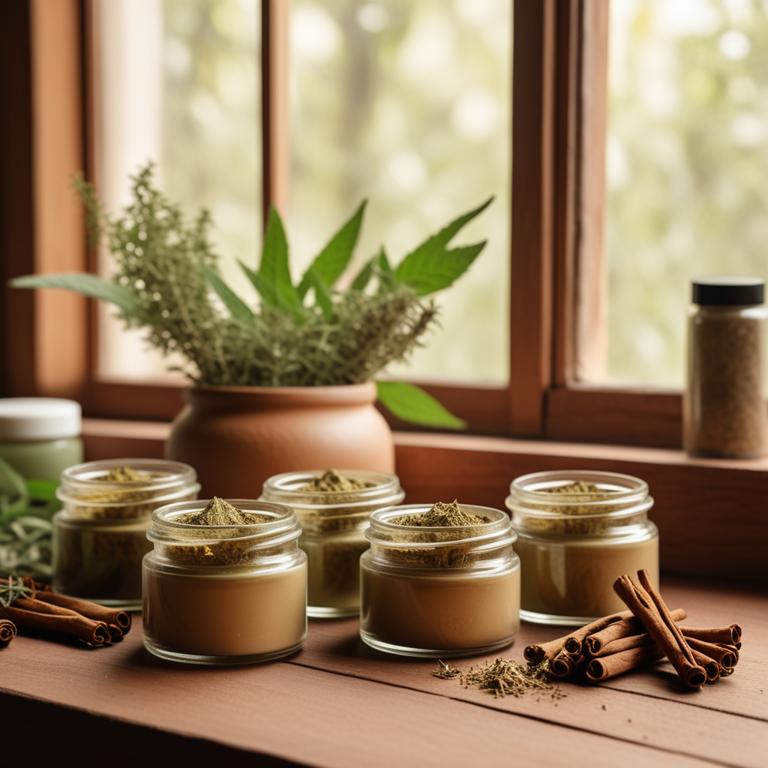
Cinchona officinalis creams have been used for centuries to treat joint pain ailments due to their anti-inflammatory and analgesic properties.
The herbal preparation contains bioactive constituents such as quinine and quinidine, which help to reduce inflammation and alleviate pain in the joints.
These creams work by inhibiting the production of pro-inflammatory enzymes, thereby reducing swelling and discomfort in the affected areas, ultimately providing relief from joint pain.
The benefits of using Cinchona officinalis creams for joint pain treatment include reduced inflammation, improved mobility, and a decrease in the reliance on pharmaceutical pain medications.
5. Commiphora mukul creams

Commiphora mukul creams, also known as guggul creams, have been traditionally used to treat joint pain ailments due to their anti-inflammatory and analgesic properties.
The bioactive constituents of Commiphora mukul, including guggulsterone and guggulic acid, help to reduce joint inflammation and pain by inhibiting the production of pro-inflammatory enzymes and cytokines.
These creams can provide relief from joint pain and stiffness, as well as improve joint mobility and function, making them a beneficial herbal preparation for treating joint-related ailments.
The benefits of using Commiphora mukul creams include reduced pain and inflammation, improved joint health, and a natural alternative to conventional pain-relieving medications.
Related Study
According to the study, Commiphora mukul creams have been found to have direct evidence in the management of osteoarthritis, suggesting potential anti-inflammatory and anti-nociceptive effects for joint pain relief.
6. Boswellia serrata creams
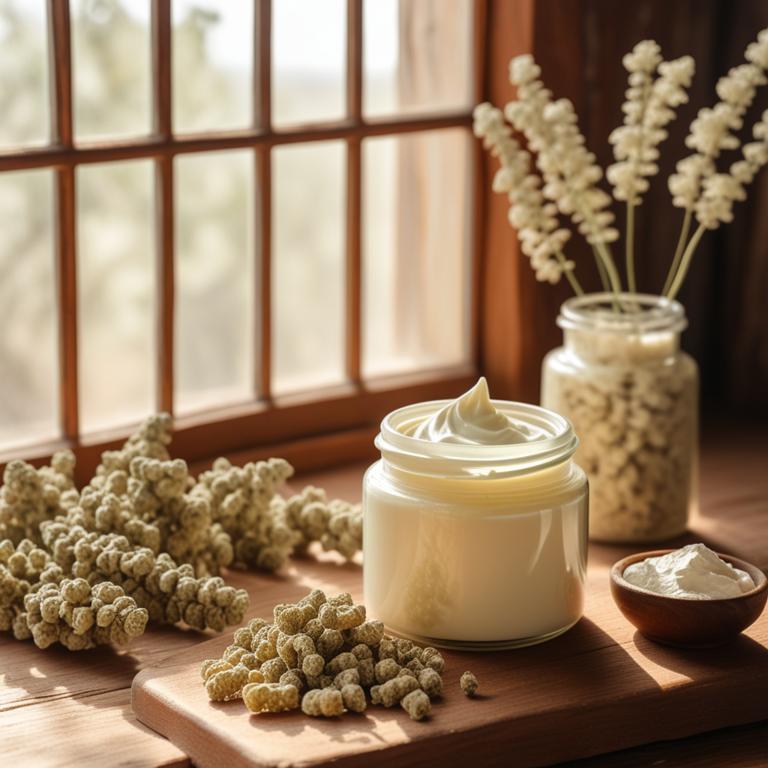
Boswellia serrata creams have been traditionally used to treat joint pain ailments, such as osteoarthritis and rheumatoid arthritis, due to their anti-inflammatory and analgesic properties.
The bioactive constituents, including boswellic acids, acetyl-11-keto-β-boswellic acid (AKBA), and 3-acetyl-11-keto-β-boswellic acid (3-AKBA), help to reduce inflammation and pain by inhibiting the production of pro-inflammatory enzymes and mediators.
These creams work by penetrating deep into the skin and joints to provide targeted relief from pain and inflammation, making them a popular natural alternative to conventional pain medications.
The benefits of using Boswellia serrata creams include reduced joint pain and inflammation, improved mobility, and a decrease in reliance on over-the-counter pain medications, making them a valuable addition to a comprehensive pain management plan.
Related Study
According to "Phytotherapy research : PTR", Boswellia serrata creams for joint pain appear to be effective in improving pain and physical function, as demonstrated by the study showing that B. serrata was more effective than both placebo and valdecoxib for these outcomes.
7. Hamamelis virginiana creams
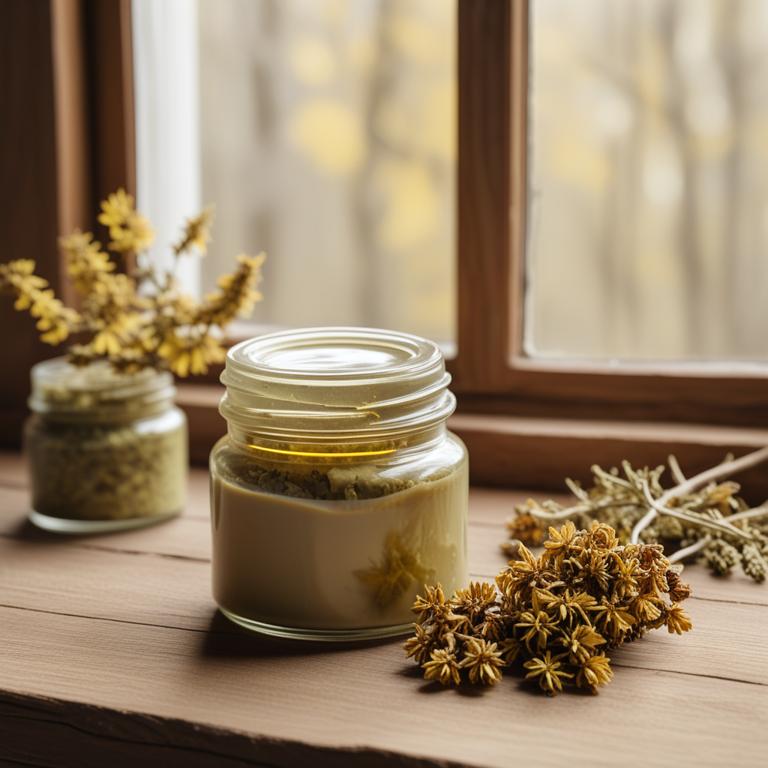
Hamamelis virginiana creams have been traditionally used to treat joint pain ailments, offering relief from inflammation and discomfort.
The anti-inflammatory and antiseptic properties of this herbal preparation help to reduce swelling and promote healing in the affected joints.
The bioactive constituents, including salicin, gallic acid, and tannins, work together to inhibit the production of pro-inflammatory enzymes, thereby reducing joint pain and inflammation.
The benefits of using Hamamelis virginiana creams to treat joint pain include reduced inflammation, improved mobility, and enhanced overall well-being.
8. Capsicum annuum creams
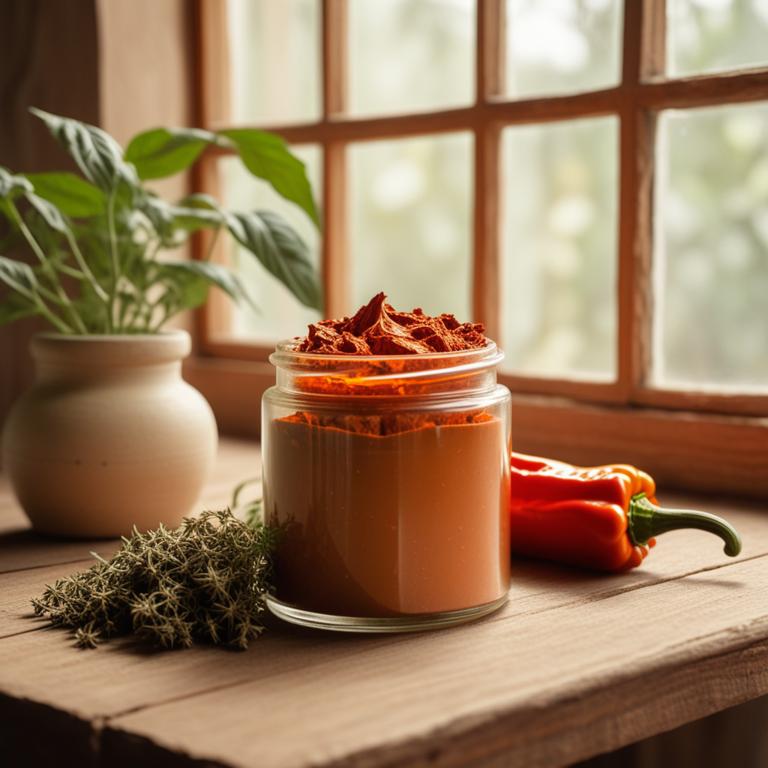
Capsicum annuum creams have been traditionally used to treat joint pain, a common ailment associated with inflammation and discomfort.
The anti-inflammatory properties of Capsicum annuum creams help to reduce pain and swelling in the joints, providing relief from the condition.
The bioactive constituents, such as capsaicin, are responsible for the analgesic and anti-inflammatory effects, which help to block the production of a chemical called substance P that transmits pain signals to the brain.
The benefits of using Capsicum annuum creams to treat joint pain include reduced pain and inflammation, improved mobility, and a decrease in the reliance on conventional pain medications.
Related Study
According to the provided study, Capsicum annuum creams for joint pain have been successful in the treatment of conditions such as rheumatoid arthritis and osteoarthritis.
9. Zingiber officinale creams

Zingiber officinale creams, derived from the rhizome of the ginger plant, have been used for centuries to treat joint pain ailments due to their anti-inflammatory and analgesic properties.
The bioactive constituents, including gingerols and shogaols, have been found to inhibit the production of pro-inflammatory cytokines and enzymes, thereby reducing pain and inflammation in the joints.
By reducing inflammation and pain, Zingiber officinale creams help to improve joint mobility and alleviate symptoms associated with conditions such as osteoarthritis and rheumatoid arthritis.
The benefits of using Zingiber officinale creams to treat joint pain ailments include reduced pain and inflammation, improved joint mobility, and enhanced overall quality of life.
Related Study
According to "Arthritis and rheumatism", Zingiber officinale creams for joint pain, a highly purified and standardized extract of Zingiber officinale was found to have a statistically significant effect on reducing symptoms of osteoarthritis of the knee, with a moderate effect size, although it also resulted in more gastrointestinal adverse events compared to a placebo.
10. Aloe barbadensis creams

Aloe barbadensis creams have been widely used to treat joint pain due to their anti-inflammatory and analgesic properties.
The gel extracted from the aloe vera plant contains bioactive constituents such as aloin, aloe-emodin, and acemannan, which help to reduce inflammation and alleviate pain in the joints.
By reducing inflammation and promoting healing, Aloe barbadensis creams help to treat joint pain, making it a popular natural remedy for conditions such as osteoarthritis and rheumatoid arthritis.
The benefits of using Aloe barbadensis creams to treat joint pain include reduced pain and inflammation, improved joint mobility, and enhanced overall well-being.
Related Study
According to "Journal of ethnopharmacology", Aloe barbadensis creams for joint pain may provide relief due to the immunomodulatory properties of the gel polysaccharides, specifically the acetylated mannans, which may help address inflammation and other underlying processes contributing to joint pain.
11. Glycyrrhiza glabra creams

Glycyrrhiza glabra creams, derived from the licorice root, have been used to treat joint pain due to their anti-inflammatory and analgesic properties.
These creams help to reduce joint pain and inflammation by blocking the production of pro-inflammatory enzymes and suppressing the activity of pain-sensing neurons, thereby providing relief from pain and stiffness.
The bioactive constituents of Glycyrrhiza glabra, including glycyrrhizin and flavonoids, exhibit their therapeutic effects by inhibiting the activity of pro-inflammatory mediators and promoting the production of anti-inflammatory cytokines.
The benefits of using Glycyrrhiza glabra creams to treat joint pain include reduced pain and inflammation, improved joint mobility, and enhanced overall quality of life.